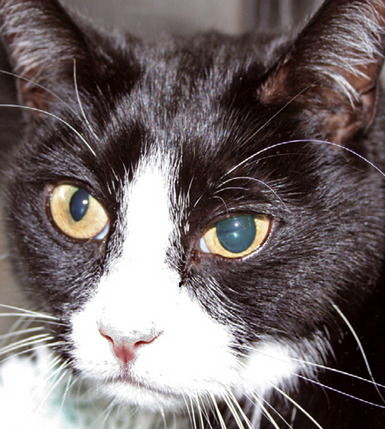

The damage to this particular section of the nervous system occurs commonly perhaps because it’s made up of very long nerve fibers that pass through the neck and take a long, arcing course through the chest before returning to the middle ear and only then coursing towards the eye. They are not part of the nervous system that helps manage sight or conscious movement of the eyes or lids. In other words, these are nerves that govern the body’s automatic functions. In the case of Horner’s Syndrome, the affected nerves are always part of the autonomic nervous system. The causes of Horner’s Syndrome are many and various, but they can all be traced to damage sustained by the nerves that innervate the eye on the affected side of the head. Slightly pinker color and increased warmth of the ear and nose on the affected side Slight drooping of the affected eye’s lid In the case of the commonly observed Horner’s Syndrome, either definition works.ĭogs and cats who experience this very specific cluster of signs will display the following five signs: Physiologic anisocoria under various lighting conditions.A syndrome is defined as either a) a group of symptoms that consistently occur together or b) a condition characterized by a set of associated symptoms.

However, some cases of TNP in children are congenital, meaning they occur from birth. Other causes of TNP in children include migraine and severe infections, such as meningitis. potential loss of ability to focus on objects.abnormalities in the muscles around the eye.slight drooping of the eyelid, known as ptosis.

Anyone experiencing symptoms after a head injury must see a doctor.Īside from the pupils being different sizes, other symptoms of TNP include: Third nerve palsy (TNP) can cause the pupils to be different sizes.Ĭauses of TNP include a brain hemorrhage, trauma, or aneurysm. Share on Pinterest Third nerve palsy or Horner’s syndrome may cause anisocoria. a disease affecting the information pathways to the pupil.a disease affecting the iris, or colored area.Pathological anisocoria: This type is when the difference in pupil size comes from one of the following: Mechanical anisocoria: This type of anisocoria is the result of physical damage to the eye, such as an injury or a condition that causes inflammation to the eye. The difference between the pupil sizes is more or less constant, even when the light changes, and is not usually of concern. Physiological anisocoria may be temporary or permanent, depending on individual cases.Ībout 15–30% of the population experiences physiological anisocoria. It is the most common type of anisocoria, and the difference between the pupil sizes is no more than 1 millimeter. Physiological anisocoria: This is when the pupils are naturally different sizes. Share on Pinterest Physiological anisocoria is the most common type of anisocoria.


 0 kommentar(er)
0 kommentar(er)
